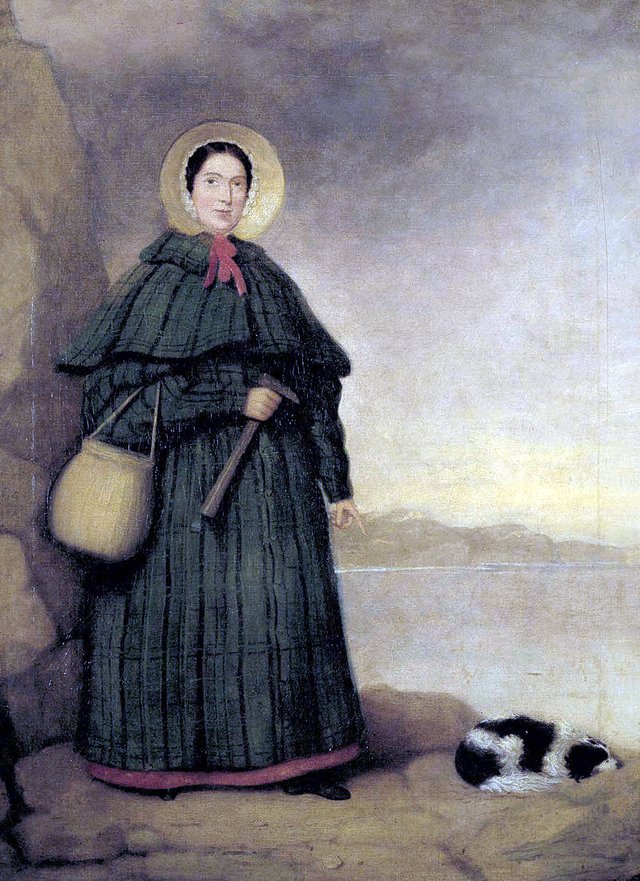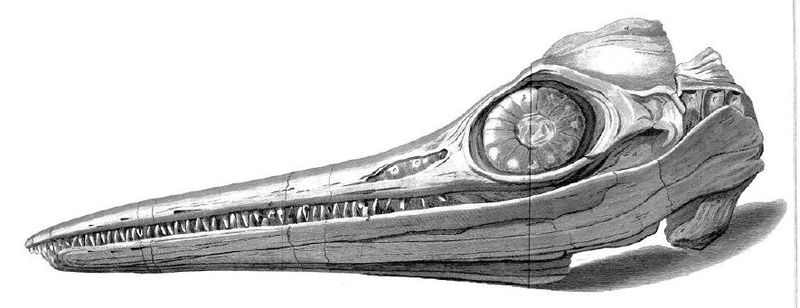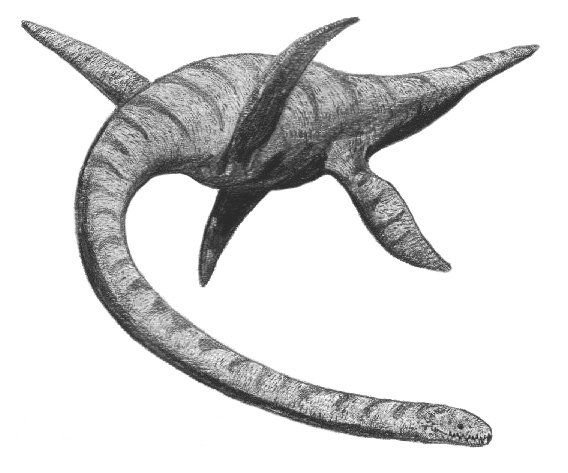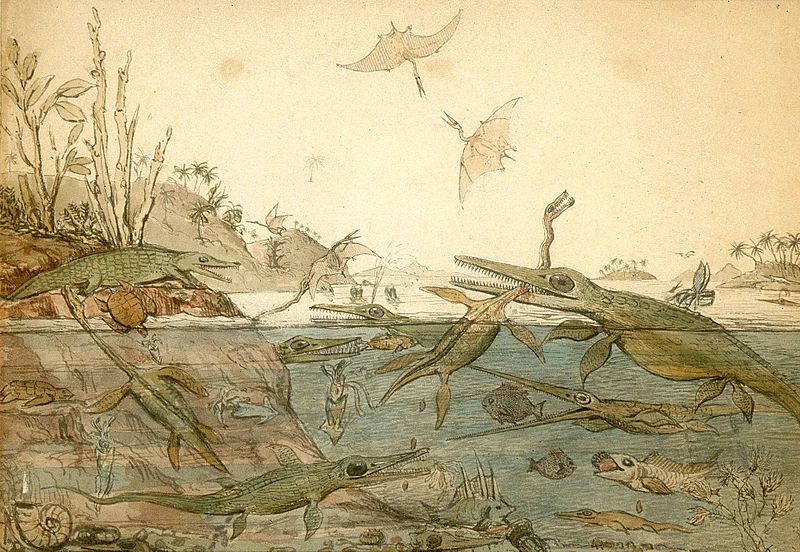Mary Anning - Female Scientists Who Aren't Mary Curie
G’day Team,
Whenever asked to produce the names of female scientists I’ve noticed that a lot of us, best intentions or not, seem to have only one we can conjure up on the spot... “Marie Curie”. Now Marie’s contribution to physics are amazing and I don’t want to take anything away from her achievements, but she’s not the only female scientist to ever exist. So I decided I'd start writing a series on female scientists, who aren't Mary Curie!
Anyone else interested in contributing to this series,
please do so by using the tag #womeninscience
So let's get started!
The shells she sells are surely seashells
So if she sells sea shells on the seashore
I’m sure she sell seashore shells
A woman who doesn’t understand the laws of supply and demand? Or the life of an underappreciated and brilliant scientist?
The Story of Mary Anning

Image source - Public Domain
While almost no one outside of her field has ever heard of her, Mary is among the most inspiring and successful scientists of her generation. When Curie's great-grandparents still weren't born Anning was fighting the power and showing up her male counterparts decade after decade.
Born in Dorset England, Mary was the fifth Ten children born to a cabinetmaker and recreational fossil-finder Richard Anning and mother Molly Anning. Mary was named for her oldest sister who, five months before her own birth, burn to death at age five while trying to tend a fire in the family home.
Of her ten siblings only Mary and one older brother survived to adulthood, and this set the scene for the perseverance Mary would exhibit throughout the rest of her life. At fifteen months Mary was being held by a neighbour when lightning struck a nearby tree and killed her and two other women, Mary survived the incident.
Following in her father’s footsteps Mary soon became interested in fossil hunting and the underlying gentleman’s-science of geology that was so popular at the time. Being a women in a world dominated by men, Mary subsisted her income by selling fossils to collectors, who often went on to claim credit for her findings and publish papers on the fossils without giving Mary either credit or even a mention.
It was the early years of the (still) prestigious Geological Society and being both working class and a woman Mary was doubly unqualified for membership, or even to attend the societies meetings. This being said, Mary’s unparalleled skills for not only finding but correctly identifying fossils meant she could not be overlooked.
Discoveries & Contributions
While mary found hundreds if not thousands of fossils during her lifetime, some of her discoveries and contributions to the field of palaeontology stand head-and-shoulders above the rest.
Coprolite
For those of you who think fossil hunting is just a pile of shit, you’re at least partially right. Mary was the first to realise that the well-known ‘coprolite’ stones were actually dinosaur poop. While the smooth ‘stones’ had been recognised by palaeontologists for quite a while, no one had been able to piece together what they actually were.
Ichthyosaurs
Mary was the first skeleton of the Ichthyosaurus, a large reptilian mammal literally named ”fish lizard” in Greek. While some argue that credit should actually go to Joseph, Mary’s brother, as he found a more complete skeleton than Anning, though she beat him to her find by a year.

Image source - Public Domain
Plesiosaurus
Another large marine reptile, the Plesiosaurus was a three to four-meter-long monstrosity which lived during the Jurassic period. Once again Mary was the first to discover a full skeleton, though at the time credit was given to William Conybear, who purchased the skeletons and presented them as his own findings to the Geological Society. Anning never received credit for this discovery in her lifetime.

Image Source - CC BY-SA 2.5 (No changes made)
Pterosaurus
Believe it or not, what we commonly call pterodactyls is actually a misnomer for what is correctly called a pterosaur. While there is a sub-genera called the pterodactyls, that’s not what’s represented in the movie Jurassic Park that the term was popularised from. While Anning was not the first to find a pterosaur, she was the first outside of Germany, and found what is still considered one of the best fossils in the world.
Ink sacs
Mary was the first to realize that the solidified gritty black substance found in many of her Belemnoidea fossils could be re-constituted to make ink. A fact which led her to correctly deduce that many species of the were able to produce and 'squirt' ink like modern squid.
Legacy
While Mary received little recognition for her amazing achievements during her life, her legacy has lived on. Anning died of breast cancer in 1847, just 47 years of age. Though the Geological society had finally recognized her works enough to support her financially through her final years, it took decades for the full extent of her contributions to science to be realized. What lives on today are not only the fossils she discovered in her time but a plethora of species named after her and a nursery rhythm too.
Duria Antiquior, a more ancient Dorset
This was a painting commissioned by a supportive geologist Henry De la Beche and produced by lithographer Georg Scharf imagining the world of Anning's fossils. It was sold and proceeds were donated to support Anning during her financial difficulties.

Image Source - Public Domain
Species Named After Anning
Acrodus anningiae - Fish
Belenostomus anningiae - Fish
Cytherelloidea anningi - Ostracod
Anningia - Therapsid genus
Anningella - Bivalve mollusk genus
She Sells Seashells
While there’s debate over the link between the rhythm and Mary, most have credited Terry Sullivan’s lyrics to the famous paleontologist.
... perhaps the best summary of Anning’s life come from Charle’s Dickens himself “The carpenter's daughter has won a name for herself, and has deserved to win it.”
Thank
Thanks for reading team, as usual, please feel free to comment below and I hope everyone had fun and learned something interesting. For those who've read my articles before you'll have noticed my absense, please bear with me while I get back into it!
Thanks
-tfc
Anyone else interested in contributing to this series,
please do so by using the tag #womeninscience
Resources
Wiki
Creation.com - mostly a load of crap, but some good pointers on her life
Palaeofiles
Famousscientists
steemstem

A delightful article. Survivor indeed. You inspire me to write about women scientists--truly an uphill battle not only to be recognized, but even to work. I know Marie Curie gets glory today, but I did recall as I read your blog that Pierre had to advocate for her so she could share in the 1903 Nobel Prize. The irony here is, it was Marie who decided to study radioactivity. Pierre followed her lead. He was studying magnetism with his brother at the time. Not only that, when the couple went to collect their prize, only Pierre was invited to speak at the ceremony.
Thanks for the comment @agmoore, keen to see your post! I didn't know she also had to fight so hard to get recognition.
:)